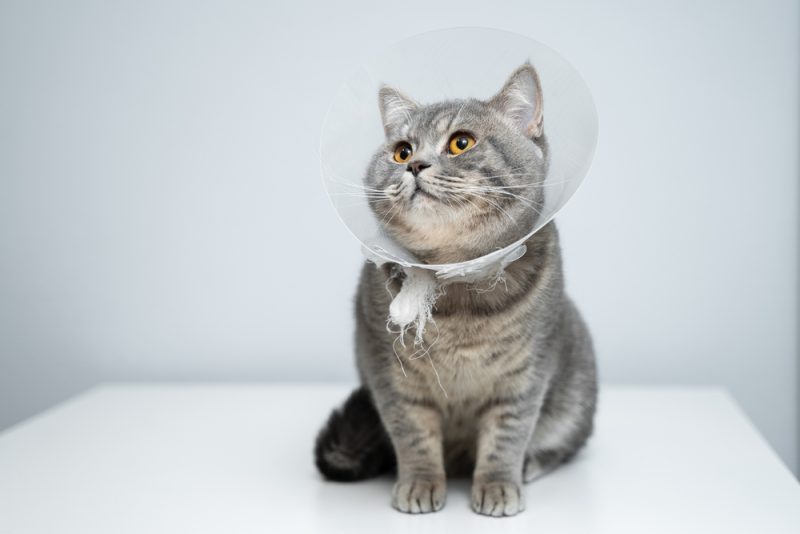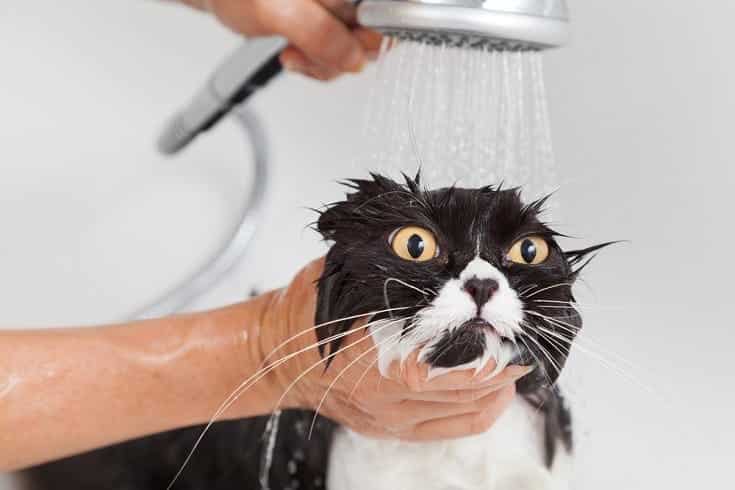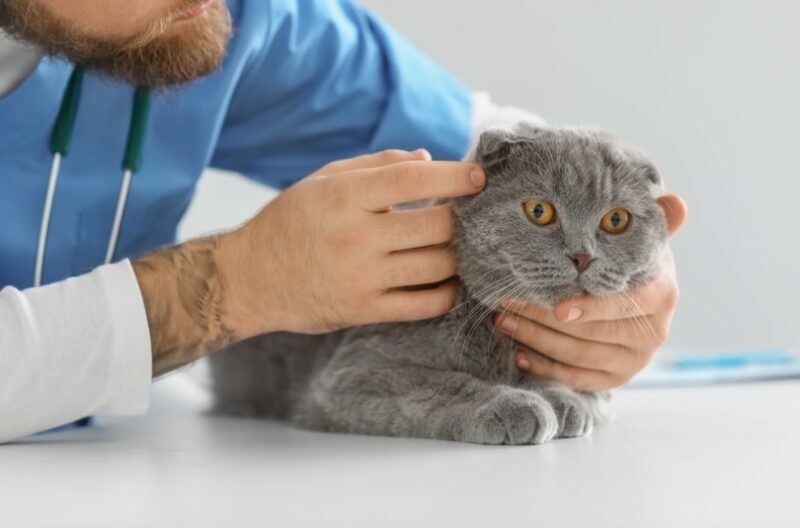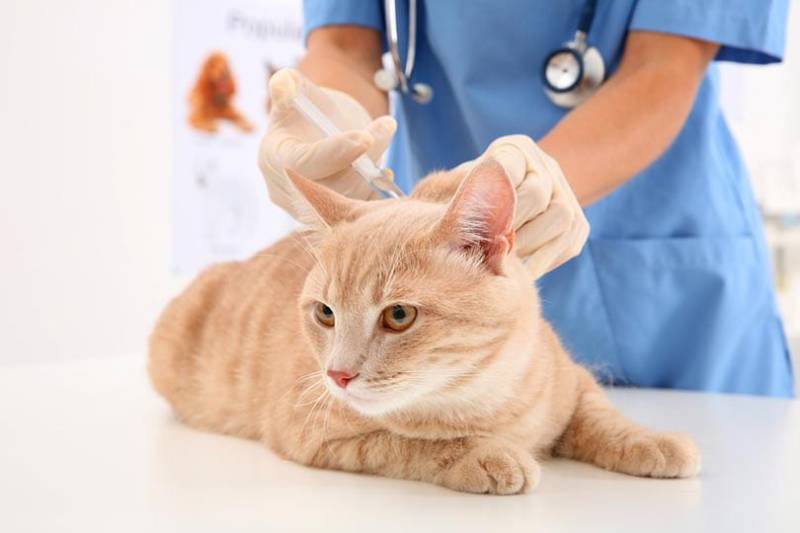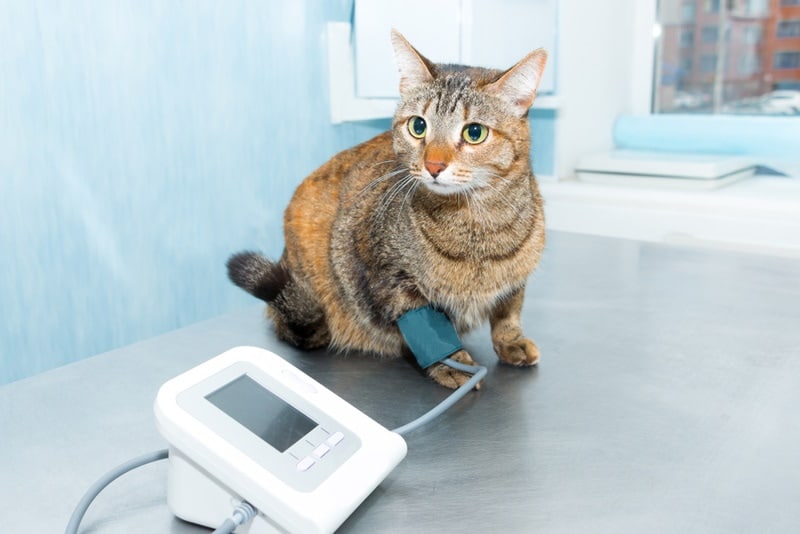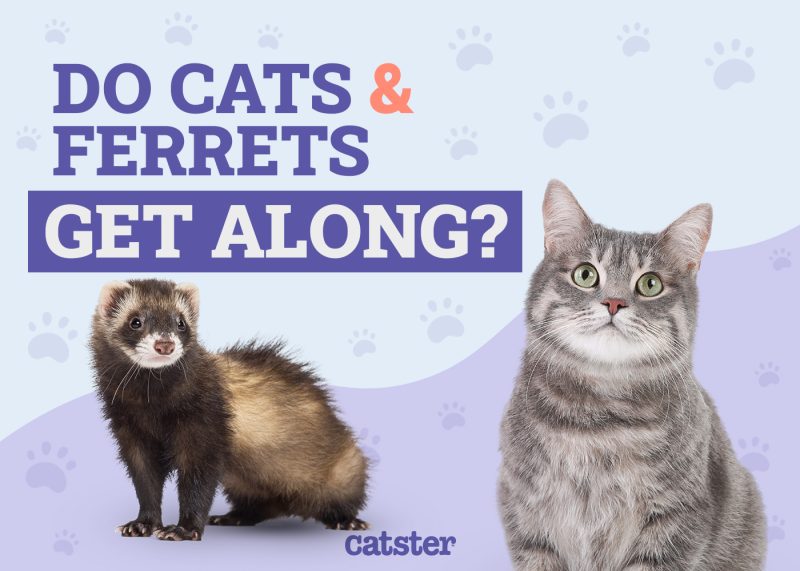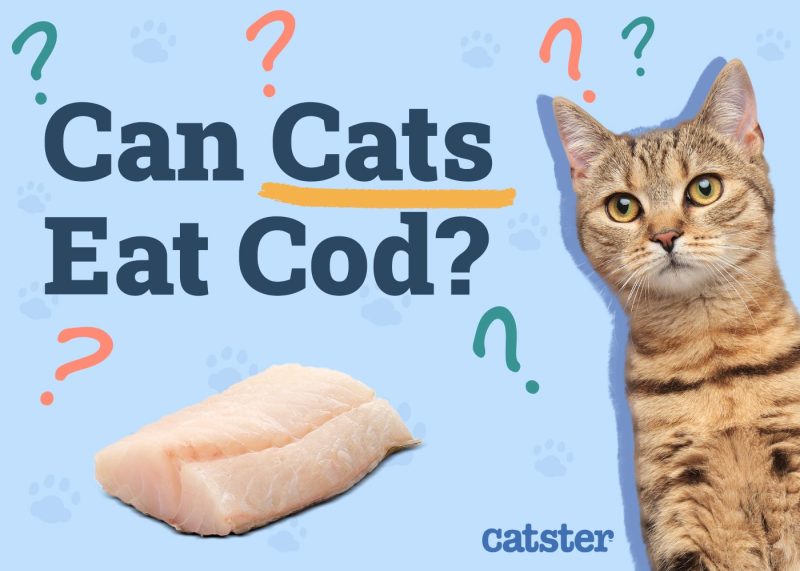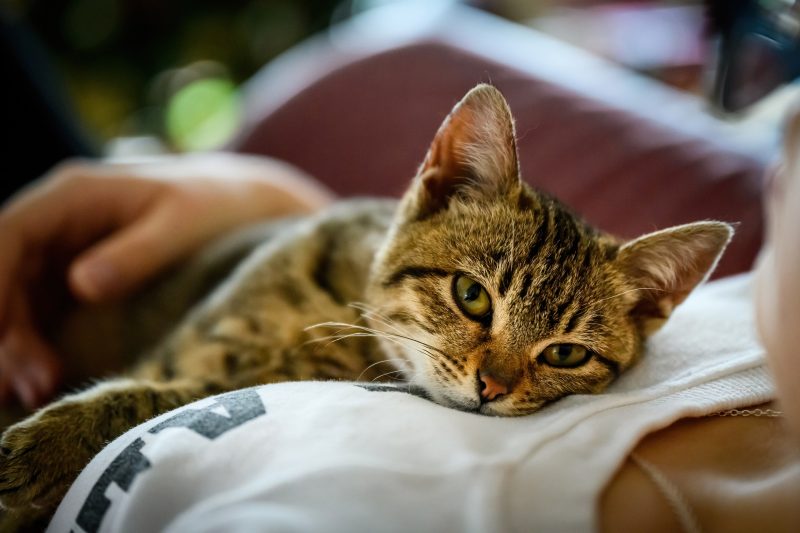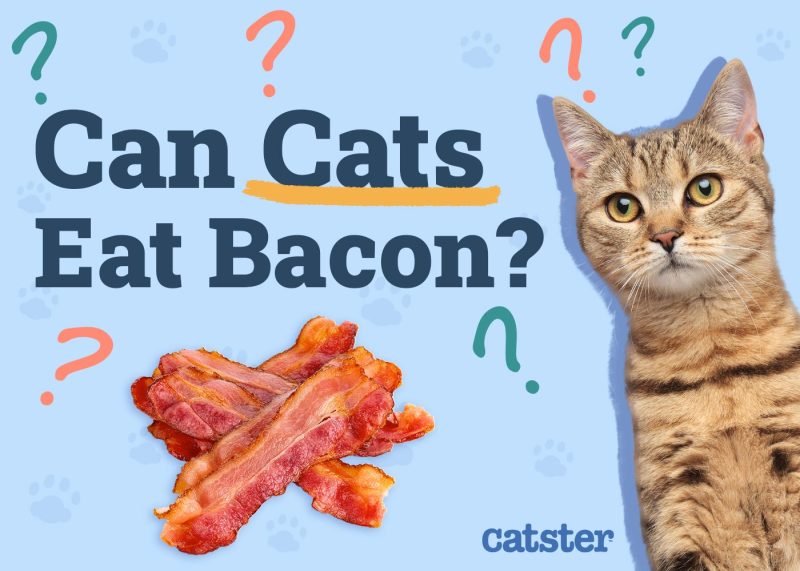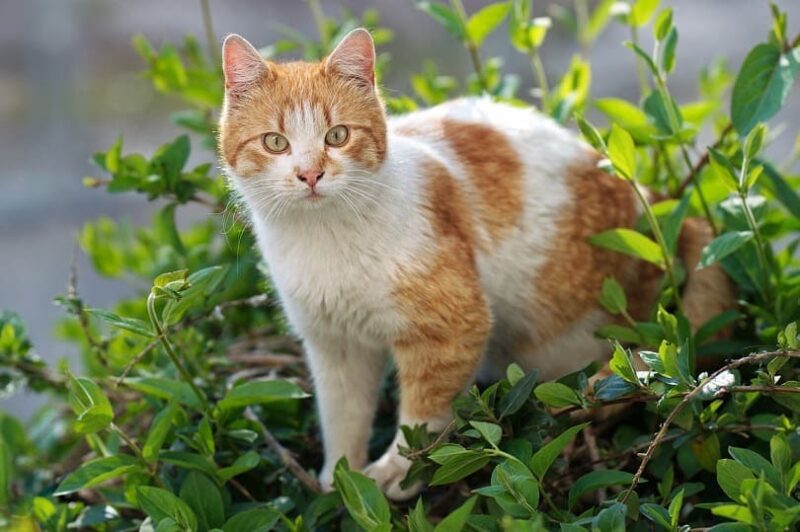Outdoor cats have lots to explore during the warmer months, but once winter rolls in, there are a number of dangers that every outdoor cat parent must be aware of.
Cats are pretty good at adapting and keeping themselves safe, but they definitely need more help in cold weather.
In this article, we’ll dive into the potential dangers for any outdoor cats, including your own, and the best ways to keep them both warm and safe during the long winter months.

The 8 Ways To Keep Outdoor Cats Safe in Winter
1. Antifreeze
The use of antifreeze in your car could lead to antifreeze poisoning in outdoor cats. Very small amounts of certain types of antifreeze can prove fatal for cats—if they don’t receive treatment shortly after ingesting it, there is a high likelihood of kidney failure and death.
When using antifreeze, if any spills on the ground, make a point of cleaning it up right away. Better yet, ensure you are using pet safe antifreeze.
The initial signs of antifreeze poisoning are:
- Lethargy
- Incoordination
- Appears “drunk”
- Vomiting
If your cat ingests antifreeze, or you have reason to suspect they may have, immediately take them to your vet or nearest emergency clinic.
If you need to speak with a vet but can't get to one, head over to PangoVet. It's an online service where you can talk to a vet online and get the advice you need for your pet — all at an affordable price!

2. Salt and Ice Melt
Most ice melts and rock salts commonly used to de-ice roads are quite dangerous for cats. Many ice melts can cause chemical burns on your cat’s paws, so consider using something natural, like sand, on your driveway. There are pet-safe ice melts available, but even so, they can still be harmful to cats.
When it’s time for your cat to come inside, always wipe their paws and the fur on their bellies with a warm and wet cloth. This prevents them from ingesting these chemicals by licking them off their paws, which can lead to poisoning.
3. Bring Them Indoors
If you have an indoor/outdoor cat, ensure they are inside in the evenings when temperatures are at their coldest. You should also keep your cat inside when a winter storm is brewing or when the temperature is frigid. Despite their permanent fur coats, cats are susceptible to the cold and will become colder faster than you probably realize.
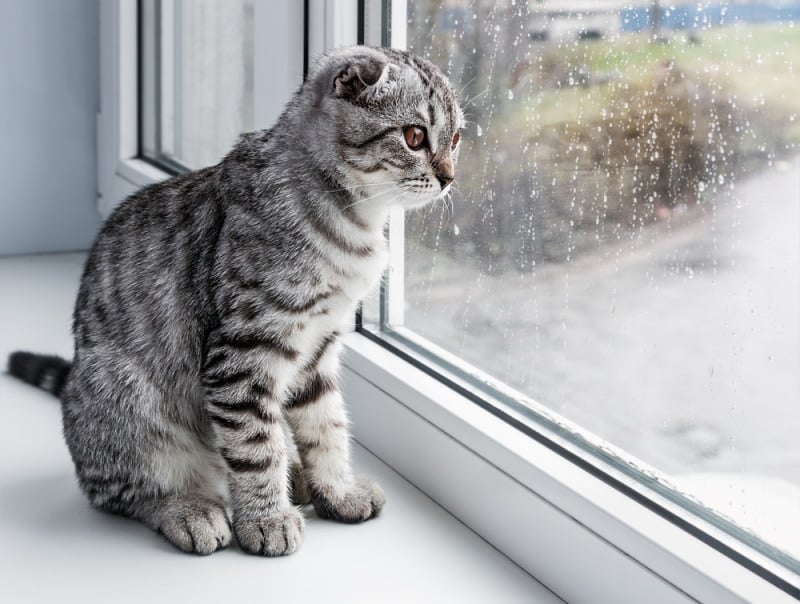
4. Check Your Car
Outdoor cats are prone to hiding in car engines and even the wheel wells. Before starting it up, walk around your car and knock on it sharply, which should scare the cat out.
Definitely give the hood some hard raps since engines are the most common place cats tend to hide in.
5. Create a Shelter
If you have a few or even a community of feral and stray cats around your home, you can set up a shelter for them as a place to get warm. You can put the shelter anywhere on your property, but the best place is in a shelter of some kind (yes, put a shelter in a shelter).
If you have a tool shed or some room in your garage, you can place the shelter inside, which will help keep the cats warm.
You can purchase shelters or make one yourself. They should be filled with straw (not hay), which repels moisture, and try stuffing a pillowcase with shredded newspaper or packing peanuts for added comfort.
Everything should be changed and cleaned once they are dirty or damp. But if you can’t get to the shelter frequently enough, lining it in mylar will reflect the cat’s body heat and should work quite well.
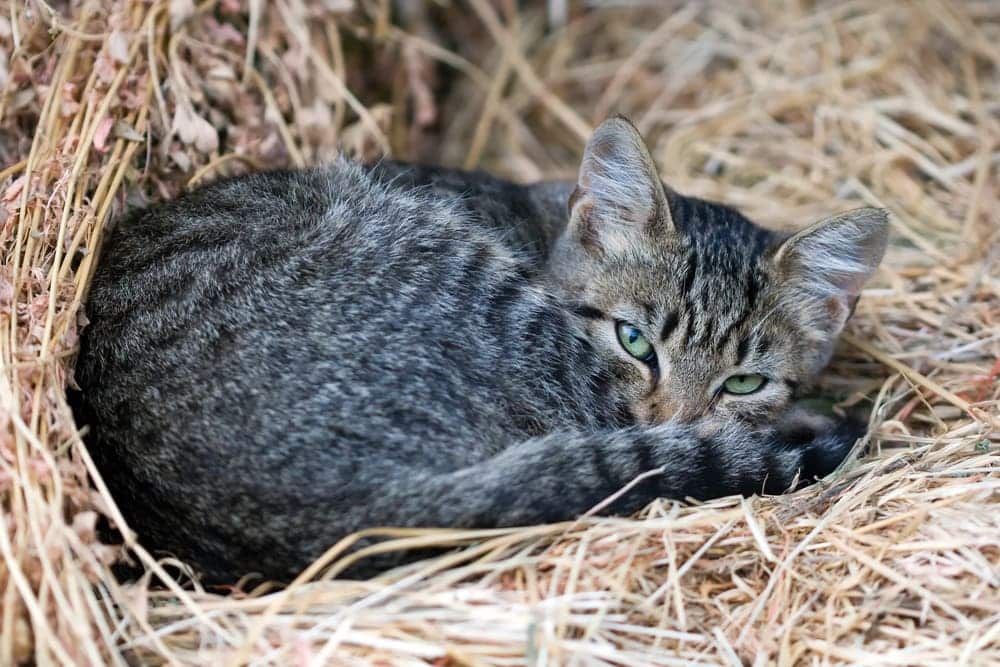
6. Provide Food and Water
This is primarily for community cats, but ensure you provide food and water for the cats. Your best bet is to make a feeding station. Feral and stray cats have a very difficult time finding enough food and water in the winter, so regularly feeding them can really help.
If you live in a particularly cold area, you should invest in heated bowls—for the water and if you plan on providing wet food for the cats.
7. Be Prepared for Bad Weather
Other than bringing your cat inside, you should put extra food and water outside for the community cats when a storm is on its way. This ensures these cats still have access to food and water if you’re not able to get to the colony during bad weather.
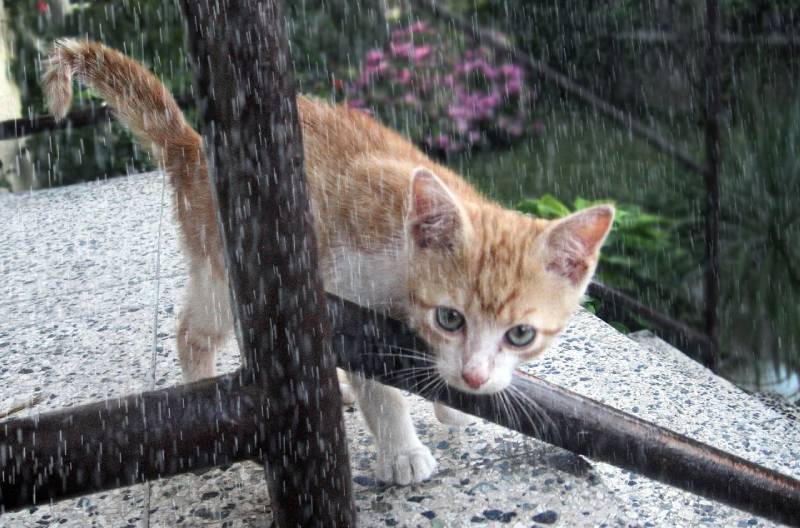
8. Keep the Shelter Cleared of Snow
This is particularly important after a big snowstorm. Some cats might become snowed in, so you’ll need to visit the shelter to shovel the snow out. And refill the food and water and just generally clean the shelter.
Some Final Tips
Regardless of the weather, although winter is harder on cats if you have an indoor/outdoor cat, investing in a GPS tracker is a great idea. You’ll always be able to find your cat unless they manage to get the tracker off.
When it comes to the shelter, remember not to put any blankets or towels inside, which will draw the heat away from the cat and will trap moisture. And don’t place food inside the shelter—try a feeding station instead. Food in the shelter might draw in other animals, which can prove unsafe for the cats.

Conclusion
Cats might seem like they can endure the cold because of those coats, but for the most part, if it’s too cold for you, it’s too cold for your cat.
Even cats with coats built for winter—like the Maine Coon—might enjoy cold weather more than shorthaired cats. But they also need to come inside or not be let out at all if the weather is too cold.
But if you are cognizant of the weather and your cat’s limitations and are also diligent in cleaning their paws when they come inside, your cat should be able to have a safe winter.
- Related reads: Can Cats Get Winter Blues?
Featured Image Credit: Emil Helge, Shutterstock


